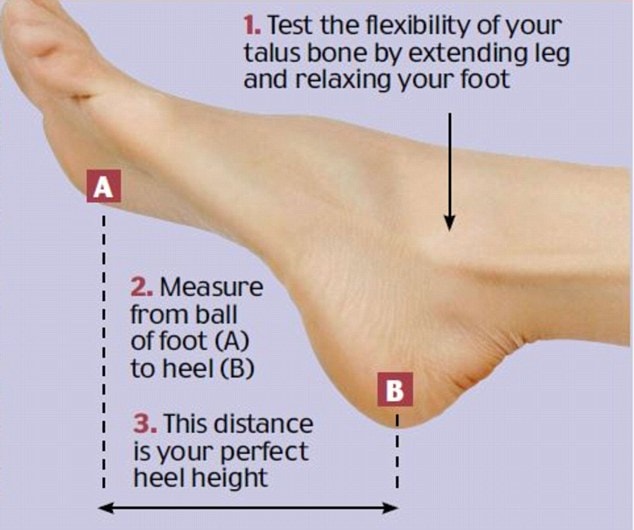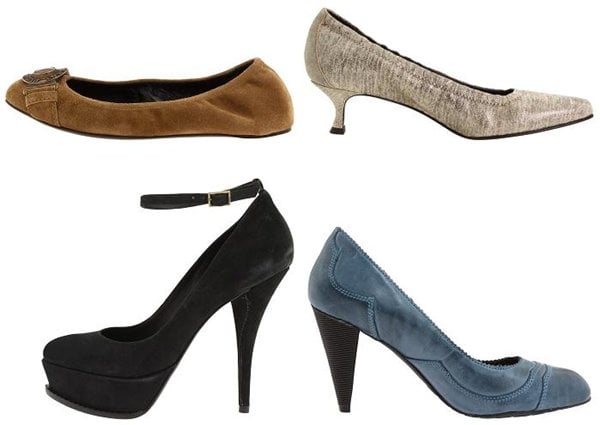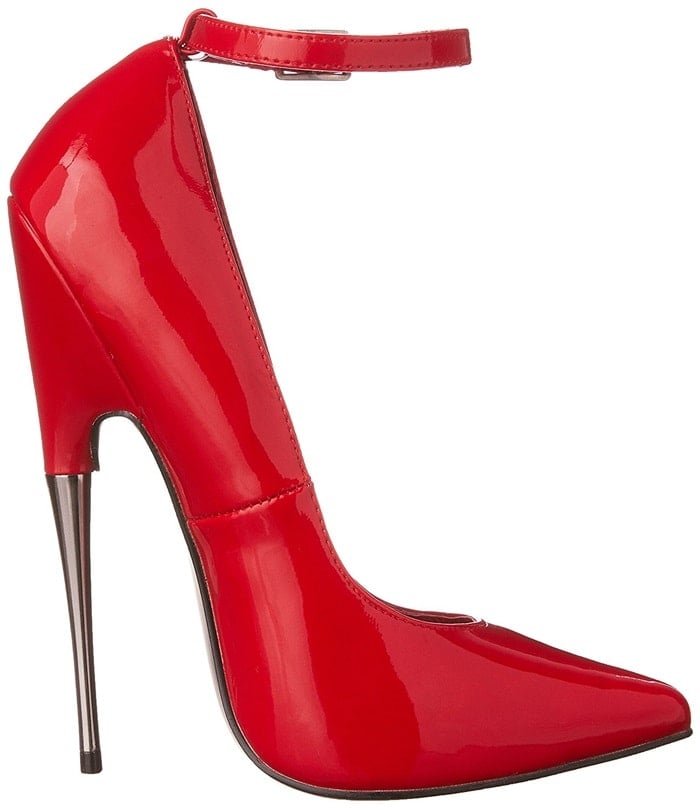Here’s another side to the article we featured the other day, “What Happens When You Wear Heels All the Time?” – What happens when you DON’T wear high heels and it’s the call of nature?
Contrary to popular belief, wearing high heels can actually be comfortable provided you find the right heel height for your feet. According to Dr. Emma Supple, an NHS podiatrist surgeon:
“At the point where the foot connects to the leg, there is one bone called the talus. Between this and the lower leg bone is a natural recess known as the sinus tarsi, which allows ankle flexibility. The size of the sinus tarsi varies from person to person and it is this that determines how much your ankle can move – and your ideal heel height.”
So how do you determine your heel height? Well, here’s Dr. Emma Supple’s diagram to help you with that:

Dr. Emma’s Guide:
- “To find your perfect heel height, take off your shoes, sit on a chair and extend one leg straight in front of you.
- Where would your heel touch the ground? With your leg stretched out in front of you and the knee supported, make an imaginary line from the heel to the ground.
- If your foot is at a right angle to your outstretched leg and does not dangle, you have a low ankle-joint axis and will be more comfortable in flat shoes than in high heels. Kate Moss is the standard-bearer for flats – they are obviously what suit her feet best.
- If your foot points down, you need to measure the distance between the top of your big toe and an imaginary line from the bottom of your heel. This is the right heel height for you. Measure it against your favorite shoes – the ones you swear you are most comfortable in, no matter how high or low. I can almost guarantee the heel will match it.”
This is why some women find that 3-inches work for them best while others favor flats. In other words, once you go against your ideal heel height, you will feel the discomfort because your body isn’t following the natural order of things.
Burberry Flats and Donald J Pliner ‘Seana2’ Pump (2 inches) / Rockport ‘Barbarella’ Pump (3 inches) / Elizabeth and James ‘Milo’ Pumps (4.5 inches)
If you are flat footed and realize that your ideal heel height is also flat, then best look for shoes with good support and see a podiatrist who can prescribe you with an orthotic insole for your feet.
Determining your heel height is also not the end it, allow me to quote Dr. Emma Supple again:
“Heels not only have to be the right height but in the right position: not too far back, but under the centre of the heel so they support your weight properly, following the natural line of your body.
The structure of the heel counter – the part of the shoe that holds your heel – is also very important. If it is too squashy and unsupportive, it will not give enough support, and that can cause heel pain.”
She also mentioned the following which we highly encourage you to take note of:
“The key thing with any shoe, high or flat, is that it should fit properly, not pinch your toes and have a degree of flexibility. The pretty but cheap shoes that you get in some High Street shops are too rigid, so they cannot mould around your feet”
“A heel of up to 4½in is fine; anything more than that is bad for your posture as it makes your bottom jut out and overloads the toes and balls of the feet. These heels can be worn for short periods only, and are made for limos, not for walking.”
Devious ‘Scream’ Pump (6 inches), $50 at Amazon
Dr. Emma Supple (continued):
“High heels become a bad thing when they are too high, worn for too long, or we walk too far in them. The upshot of this is, inevitably, pain.”
“By their nature, high heels throw all of the body weight on to the ball of the foot and the toes. The length of time a person can wear a heel depends on the individual – a good rule of thumb is not to wear any shoe for more than an hour after your feet start to hurt.”

So, what’s YOUR ideal heel height?
Credit: Daily Mail / Dr. Emma Supple / Supplefeet Clinic


